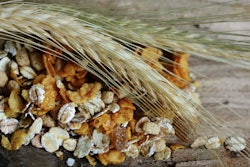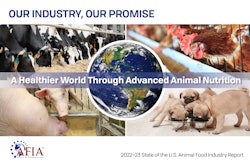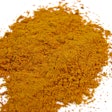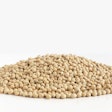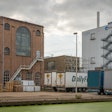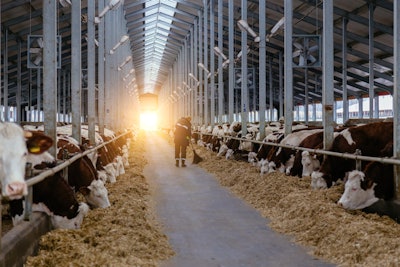
The sustainability of the dairy industry is dependent on increased productivity and improved efficiency. Efficiency is determined by cost per unit of product — in this case, per liter of milk or kilogram of meat. Improvement in efficiency of nutrient utilization, reproduction and longevity in high-yielding dairy cows and beef cattle are key drivers of overall profitability and sustainability.
In addition to the production challenge, economic variables are also driving dairy farmers to look more closely at production costs. As feed prices represent approximately 60% of the total cost of milk production, farmers need to ensure they include feed efficiency monitoring as a key parameter in their management strategy.
At the same time, there is an ever-increasing requirement toreduce the impact of ruminant livestock on the environment, and one of the key components of this impact is nitrogen excretion.
Dairy cows are inherently inefficient at converting dietary nitrogen to milk nitrogen (~25%), and low nitrogen use efficiency (NUE) is generally seen with increasing dietary crude protein (CP) levels.Excessive ammonia formation from diets with high rumendegradable protein (RDP)content is detrimental for the microbes and the ruminant. Ammonia is toxic and is removed almost completely from portal circulation during its first pass through the liver, with an energy cost of 30 kJ ME/g of nitrogen.
Rumen function
The rumen is a dynamic environment in which many complex processes and interactions occur. It isthe most influential site of digestion, and microbial fermentation provides much of the energy and nitrogen needed to sustain the cow and drive production.
The interaction between nitrogen and energy is multifaceted, and there are rumen and post-rumen relationships.
Ruminant animals are susceptible to poor nitrogen use efficiency due to the way soluble and excess nitrogen is dealt with — conversion into ammonia and then urea if not used by rumen microbes.Ruminants are capable of recycling nitrogen from blood to the gastrointestinal tract (GIT), andenergy is required by rumen microbes to use nitrogen sources to generate microbial protein. Cellulolytic bacteria have an almost exclusive requirement for soluble nitrogen but, traditionally, dairy diets result in periods of excess followed by periods of deficiency of rumen ammonia, which impacts the growth and metabolism of those bacteria.
Additionally, the microbes require an energy source in order to be able to use any available nitrogen, so balancing energy and nitrogen supply is crucial for nitrogen use efficiency.
Removal of excess nitrogen
Rumen is also required to remove excess nitrogen.Energy required to process and excrete N includes energy lost through metabolic transformations, synthesis of urea and excretion by the kidneys.This situation is exacerbated when animals are overfed crude protein to try to meet amino acid demands for the desired milk yield. Increasing dietary crude protein (CP) to drive milk yield has been shown to only be useful when dietary CP is low; when it is adequate or high, there is a detrimental effect on energy balance.The energy yield from oxidation of CP to produce high-energy phosphate bonds is less than the yield from the volatile fatty acid oxidation.
Additionally, feeding nitrogen above requirement has been shown to reduce milk gross energy,although the mechanism behind this relationship is unclear.
In the case of excess nitrogen, themajority of urea will be excreted, which is obviously detrimental for the environment but also has an energetic cost to the animal due to the detoxification of ammonia into urea prior to excretion.
Diets very high in RDP without supply of sufficient fermentable energy result in excessive ammonia formation in the rumen. This is neither good for the rumen microbes nor, in turn, for the animal, for example,负能量平衡(内)新鲜的牛。分辨asing NEB in fresh cows can impact circulating progesterone levels, resulting in reduced reproductive performance.Excess rumen ammonia can lead to elevated blood urea nitrogen (BUN) and, subsequently, milk urea nitrogen (MUN) levels.
The reason ammonia is converted to urea prior to excretion or transport is because it is toxic; it is removed almost completely from portal circulation during its first pass through the liver. One studycited an energy cost of 30 kJ ME/g of nitrogen, however, subsequent studies have seen smaller values. That said, any unnecessary or extra partitioning of energy away from production, particularly immediately post-partum,can lead to body condition loss and subsequent related issues.
Traditionally, the solution has been to decrease the rumen degradability of dietary protein and increase the supply of what is termed bypass protein and supply a balance of key essential amino acids directly to the small intestine with varying success with respect to nitrogen use efficiency.
Role of protein, energy
Microbial protein is the most efficient and cost-effective protein source for ruminant animals, and promoting protein utilization in the rumen by supporting the nitrogen requirements of all rumen microflora is a key component of improving nitrogen use efficiency.
Rumen bacteria have varying requirements for protein sources. Cellulolytic bacteria have a requirement for a constant and adequate supply of non-protein nitrogen (NPN), while amylolytic bacteria rely on high nutritional value protein sources for their amino acid requirements.
For the microbes to effectively use nitrogen sources, they require energy; this energy is provided in the form of fermentable carbohydrates. Synchrony between soluble nitrogen and energy supply has long been the subject of ruminant diet formulation in many sectors with the aim of avoiding periods of excess or deficiency in nitrogen supply.
Even with total mixed ration (TMR) feeding, there are periods of excess followed by periods of deficiency of rumen ammonia levels. Diets are still often being formulated to 18% or 19% crude protein while research has demonstrated that, provided the diet is correctly balanced, this is unnecessary and can have a detrimental effect on performance.
For example, offering low amounts of degradable protein with suitable metabolizable protein resulted in improved NUE and lowered ammonia emissions in the barn level.
Other considerations
Urea is a commonly used feed ingredient, and provides NPN that is converted to ammonia for use by the rumen microbes. This conversion occurs rapidly and can result in significant excess of ammonia followed by periods of levels that are inadequate for microbial growth and activity. There are technologies that have attempted to address this by slowing down the release of urea and subsequent conversion to ammonia. Slow-release urea has been shown to successfully increase NUE.
Focusing on post-ruminal nitrogen requirements, there has been much work on precision rationing of essential amino acids, particularly methionine and lysine. The principle relies on balancing for these amino acids rather than crude proteinper seand recent meta-analysis showed encouraging results, but further work is required to better understand the effect of different levels of lysine, as well as the real effect in transition and fresh cows.
Nitrogen use efficiency is a complex, multifaceted process that is influenced by the host animal, rumen microbes and dietary components. It is still not fully understood, but successful attempts to improve NUE are seen throughout the literature.
Editor's note:References available upon request.







